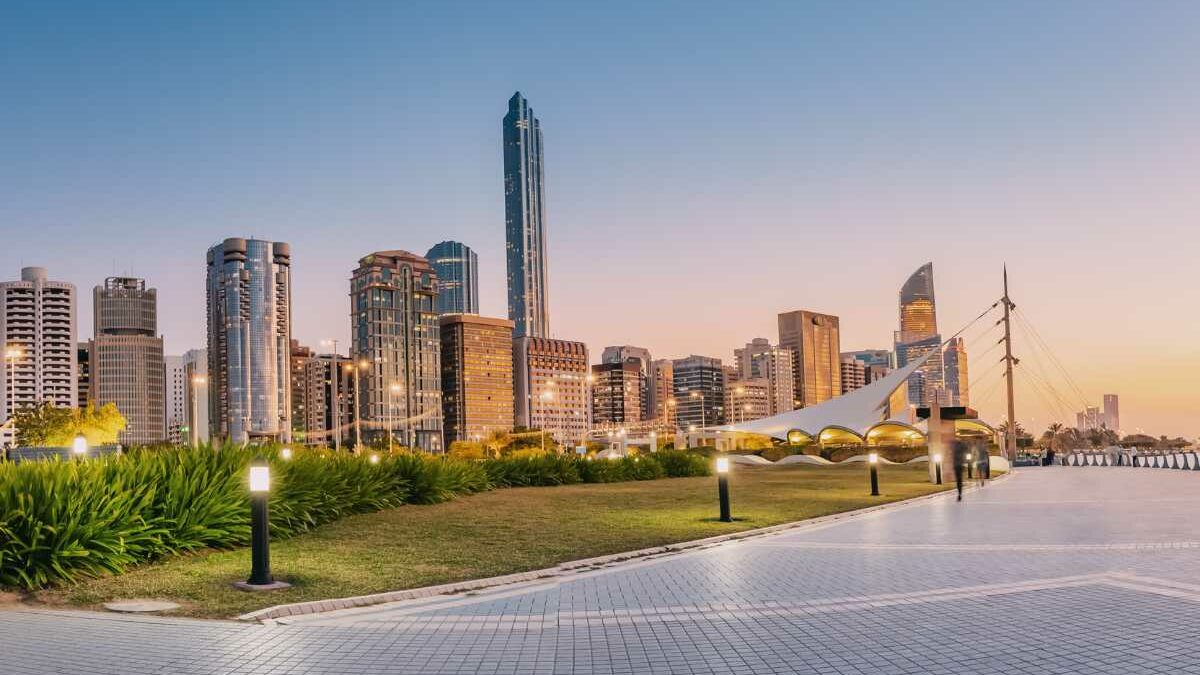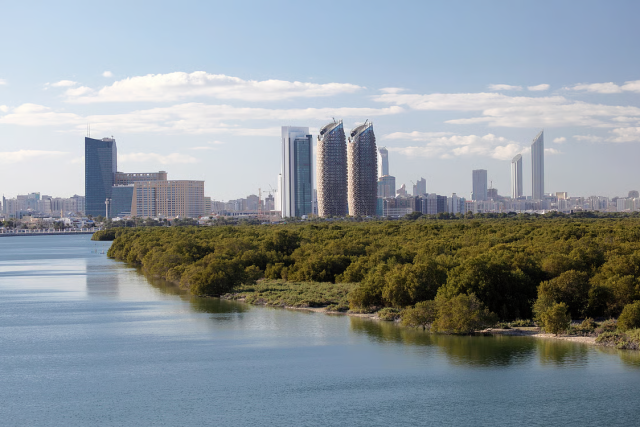
Abu Dhabi’s real estate market is being reshaped in real time. With demand outpacing supply—especially for homes that are fully built and ready to move in—prices have surged, rental costs are rising, and buyers are shifting away from off‑plan properties. What follows is a deep dive into what’s driving this trend, its impact, and what we might expect in the coming months.
What the Data Shows

Multiple recent reports and studies make clear that Abu Dhabi is experiencing strong upward pressure on both sale and rental prices:
- In 2024, residential sale prices rose by about 11% year‑on‑year, while rents increased around 20%. Villas saw especially strong appreciation, with some locations like Khalifa City posting as much as a 30% price jump.
- Apartments also saw strong gains—Saadiyat, Yas Island, Reem Island among them. For example, Saadiyat apartment rents surged ~31% annually, while Al Raha Beach and Reem Island followed close behind.
- The market for ready villas and townhouses jumped ~72% year‑on‑year in the first half of 2025, reaching its highest levels since 2021.
- Off‑plan sales volumes, however, have dropped dramatically—nearly 70% year‑on‑year.
- Transaction values remain large: in H1 2025, total residential sales (both ready and off‑plan) were about AED 8.9 billion across ≈3,300 transactions. But the value contributed by ready homes is becoming a much larger share as off‑plan wanes.
So the pattern is clear: prices up, especially for ready homes; off‑plan lagging; strong demand and constrained supply.
What’s Causing the Shift

Several key drivers help explain why ready homes are in such demand, and why off‑plan projects are less attractive right now.
- Limited New Launches / Supply Shortfall
Developers have launched fewer new off‑plan projects, and deliveries have lagged forecasts.
For example, only ~3,000 units were delivered in 2024, substantially below what had been expected.
That under‑delivery has left a gap in the ready home supply, especially for villas and townhouses. - Buyer Preference for Immediate Occupancy
Many buyers, including investors and end‑users, are choosing homes they can move into immediately. Uncertainty in construction timelines, rising costs (materials, labour), and perhaps risk aversion have made ready homes more appealing. - Strong Demand from Residents and Investors
Abu Dhabi’s stable political environment, infrastructure improvements, policy incentives (Golden Visas, retirement visas, etc.), plus continued population growth and economic diversification under Vision 2030, all contribute to sustained demand. - Rental Market Tightness
As more people prefer ready homes, rentals have also surged. Higher rents make ownership more attractive, especially for those who can afford to buy, which in turn fuels demand in the sales market. - Price Momentum and Investment Potential
With rising values (especially in prime areas), more investors see Abu Dhabi real estate as a good long‑term bet. Rental yields have improved in many areas, making ready homes attractive as income‑producing assets.
Which Areas Are Being Most Affected
Some communities in Abu Dhabi are especially seeing large gains in prices and rents:
- Yas Island: Strong demand for villas and apartments; price increases among the highest
- Saadiyat Island: Luxury, lifestyle, and cultural amenity rich; rents and prices up significantly.
- Al Raha Beach / Al Raha Beachfront: Elevated demand for well‑located, quality homes; rising prices.
- Al Reef, Reem Island, Khalifa City: Also seeing price pressures, especially villas, and in some cases sharp rental rises.
Consequences & Challenges
While the rise in ready‑home demand reflects confidence in the Abu Dhabi market, it also brings a set of challenges and risks, especially around affordability and market balance.
- Affordability Pressure
As prices for ready homes rise, and off‑plan homes become less common (or more delayed), affordability becomes a concern. Middle‑income buyers may be squeezed. Rentals rising rapidly further exacerbate cost of living pressures. - Potential Overcrowding / Infrastructure & Services Strain
As more people move into existing ready units (or stay in rentals), there could be increased demand on associated infrastructure—roads, schools, public transport, utilities, services—especially in high‑growth communities. - Investor Risk & Market Correction Concerns
Rapid price growth often invites speculation. If supply finally catches up, or macroeconomic conditions change (for example interest rate rises, credit tightening, cost inflation), there could be risk of correction. Buyers relying solely on capital gains may be exposed. - Delayed Off‑Plan Projects & Developer Risks
Off‑plan projects already delayed or slow to launch risk losing buyer confidence. Developers may face higher input costs, labour constraints, regulatory lags. If returns are squeezed, there may be pushback or slower development.
What This Means for Different Stakeholders

- End‑User Homebuyers: If you need to move in soon, ready homes offer certainty, but you’ll pay more. Patience might pay off if you can wait for upcoming completions or look in less premium areas. Financing costs and deposit demands also matter more when prices rise.
- Investors: Rental yields have improved, particularly for ready villas/townhouses in well‑served communities. But the entry cost is higher, and always consider whether expected yield and capital appreciation balance out the purchase cost, maintenance, taxes, etc.
- Developers: There is clearly demand for more ready homes and quicker delivery. Projects that can deliver high‑quality homes on time are likely to do well. Off‑plan risk needs to be managed carefully (timelines, financing, transparency).
- Government / Regulators: The authorities might need to ensure more supply, especially in middle‑income housing, strengthen infrastructure planning, ensure regulatory processes facilitate timely delivery, possibly consider incentives or policies to moderate excessive price inflation or protect tenants/homebuyers.
What’s Ahead: Outlook & Projections
Given the current trends, here are likely developments in the remainder of 2025 and beyond:
- Some Relief in Supply, but Still Tight
Reports suggest that more units are expected to be delivered in the second half of 2025, and into 2026. But the pipeline may still fall short of what’s required to reduce price pressures significantly. - Continued Price & Rent Growth (Though Possibly Moderated)
Prices are unlikely to decline soon. But the rate of growth may moderate if supply improves, interest rates change, or buyer sentiment shifts. Still, in prime areas and for high‑quality ready homes, strong demand is likely to keep pushing values up. - Shift toward Mid‑Market & Suburban Areas
As prime luxury areas become more expensive, more buyers may look toward suburbs or less central but well‑connected communities. This may shift some of the future growth in supply and demand toward those districts. - More Emphasis on Speed, Transparency, & Quality
Buyers are increasingly demanding transparency (delivery timelines, finishes, contractual clarity), and developers who can deliver on schedule with good quality will be rewarded. - Policy Measures Possibly Emerge
To ensure sustainable growth, there may be more regulation around developer commitments, tenant protections, affordable housing schemes, or incentives to build in less saturated areas to distribute demand more evenly.
Conclusion
Abu Dhabi’s housing market is at an inflection point. The surge in demand for ready homes amidst scarce supply is driving prices to multi‑year highs, particularly for villas, townhouses, and prime apartments. While this scenario reflects confidence in the emirate’s economic trajectory and policy environment, it also poses real challenges for affordability and market stability.
For prospective buyers, investors, and developers, the message is clear: the lion’s share of opportunity lies in ready homes in well‑located, amenity‑rich communities. But timing, cost, and long‑term planning will be essential to making smart decisions. If upcoming supply can be delivered efficiently—and if policy supports balance—the Abu Dhabi housing market may settle into a steadier phase. If not, price escalation could continue, potentially pushing parts of the market toward overheating.




Leave a Reply